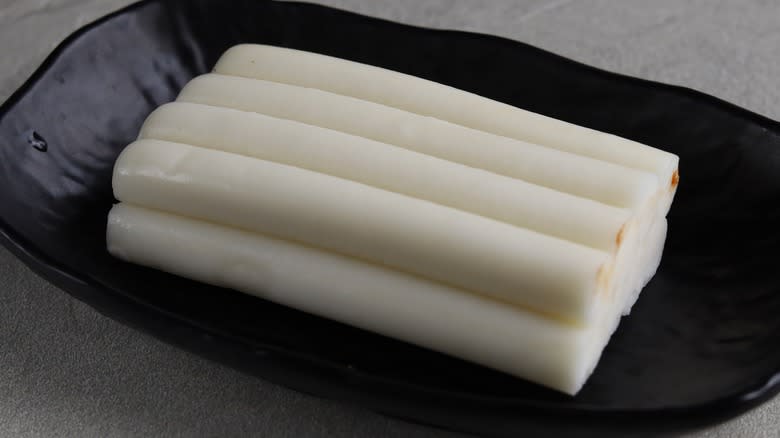How To Properly Store And Freeze Korean Rice Cakes

Storing Korean rice cakes, or tteok, is essential if you are a fan of Korean cuisine. This staple ingredient has a mild, slightly sweet flavor and a fantastic chewiness that will keep you coming back for more. It is a base for many popular dishes, such as spicy tteokbokki, in which the rice cakes are heated and served in a savory gochujang sauce. No matter how you like to eat your rice cakes, they will be at their best when kept fresh. But what's the best way to do that?
The most convenient way to store Korean rice cakes in the short term is by putting them in the refrigerator. When doing so, it's best to either keep them in their original packaging or place them in an airtight container. The container should also be rigid, such as those made of glass, rather than a flimsier plastic bag, as this will allow you to stack them in the fridge without worrying about them being squished under the weight of other foods. When stored this way, freshly made rice cakes will last a few days, while store-bought versions will last for a week or two.
Read more: 21 Delicious Ways To Use Up Leftover Rice
How To Make Korean Rice Cakes Last Longer

If you will not be using your tteok right away, it is best to move them from the fridge to the freezer in order to increase their longevity. To do so, place the rice cakes in a rigid, sealable container and stow them away in the freezer. There, they will last for up to three months or more. When you're ready to thaw your rice cakes, simply transfer them back to the refrigerator. Still, even with proper storage, Korean rice cakes will eventually expire.
It's important to keep a sharp eye out for signs of spoilage in order to prevent yourself from accidentally consuming harmful pathogens that have the potential to make you sick. Examine your tteok with your senses of sight and smell. If you notice a sudden change in color or visible mold growth, or if the cakes have a strong, unpleasant odor, they have likely gone bad. Another sign of declining quality, while not necessarily a sign of expiration, is tteok that is hard or crumbly rather than moist and springy. If you notice any of these traits, it's best to dispose of the cakes rather than eating them.
Read the original article on Tasting Table


